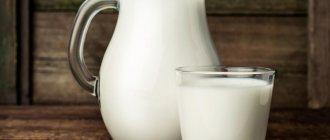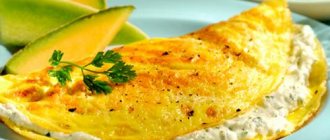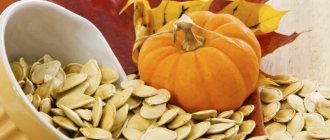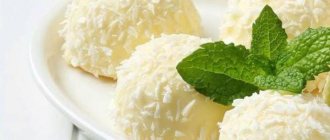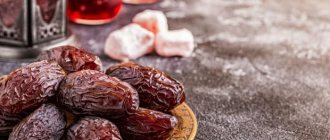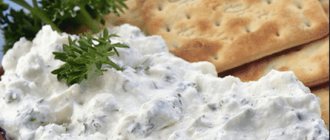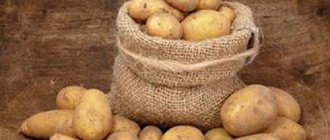Composition of sour cream
A high-quality fermented milk product, made from a special starter and cream, should be fatty, moderately thick and not very sour. This sour cream contains saturated, poly- and monounsaturated fatty acids, as well as mono- and disaccharides.
| Vitamins | Content | Minerals | Content |
| A | 90.0 mcg | Calcium | 141.0 mg |
| D | 0.2 mcg | Zinc | 0.5 mg |
| D3 | 0.2 mcg | Iron | 0.1 mg |
| B2 | 0.1 mg | Sodium | 83.0 mg |
| B3 | 0.1 mg | Magnesium | 10.0 mg |
| E | 0.3 mg | Selenium | 3.1 mg |
| B4 | 19.2 mg | Phosphorus | 71.0 mg |
| K | 0.5 mcg | Potassium | 212.0 mg |
| Beta carotene | 21.0 mcg | ||
| C | 0.9 mg | ||
| B9 | 11.0 mcg | ||
| B12 | 0.4 mg |
The energy value of sour cream depends on its fat content. A good product is characterized by a uniform white color with a slight creamy tint without any external irregularities or lumps, it has an enveloping property.
Calorie content and nutritional value Sour cream 20.0% fat
| Property | Meaning |
| Calorie content, kcal | 206 |
| Proteins, g | 2,5 |
| Carbohydrates, g | 3,4 |
| Fats, gr | 20 |
Sour cream, whose calorie content is associated with an impressive amount of milk fat, has extremely high nutritional value. 100 g of product contains 2% of the daily requirement of carbohydrates, 13% fat, 5% protein.
| Fat content of sour cream per 100 g of product | Proteins, g | Fats, g | Carbohydrates, g |
| 10% 1 tsp/tbsp. l. | 3,0 0,21/0,6 | 10,0 0,7/2 | 2,9 0,2/0,58 |
| 15% 1 tsp/tbsp. l. | 2,6 0,18/0,52 | 15,0 1,05/3 | 3,0 0,21/0,6 |
| 20% 1 tsp/tbsp. l. | 2,8 0,2/0,56 | 20,0 1,4/4 | 3,2 0,22/0,64 |
| 25% 1 tsp/tbsp. l. | 2,6 0,18/0,52 | 25,0 1,75/5 | 2,5 0,18/0,5 |
| 30% 1 tsp/tbsp. l. | 2,4 7/0,48 | 30,0 0,17/6 | 3,1 0,22/0,62 |
The product, made from whole milk, fresh cream and natural starter, is recommended for consumption even by people who cannot tolerate cow's milk protein.
The energy and nutritional value of homemade sour cream is determined by the product-specific indicators shown in the table, taking into account the daily consumption rate.
| Name | Content | % of daily value |
| Squirrels | 2.78 g | 4% |
| Fats | 26.79 g | 36% |
| Carbohydrates | 3.48 g | 1% |
| Calorie content, kcal | 268.40 kcal | 13% |
The information provided is an average and may vary depending on the origin of the product.
| Name of the dish | Calorie content, kcal/100 g |
| Cucumber salad | 35,53 |
| With tomatoes | 91,88 |
| With radish | 95,75 |
| With beets | 99,23 |
| Borsch with sour cream | 21,38 |
| Chicken liver in sour cream | 137,18 |
| Rabbit in sour cream | 204,01 |
| Sour cream pie | 173,92 |
| Cottage cheese casserole | 173,92 |
| Sour cream pie | 238,71 |
| Sour cream cheesecake | 193,9 |
The high calorie content of such a component requires not only careful attention to the composition of the ingredients, but also compliance with the portion size when consuming the dish.
Sour cream (the calorie content of liquid dishes is practically independent of the inclusion of a fermented milk product in the recipe) is an indispensable dressing for many liquid dishes, participating in the creation of a variety of flavor bouquets.
Borsch with sour cream
Calorie content: 21.38 kcal/100 g. Recommended serving: 250 g.
Required ingredients:
- sunflower oil - 30 ml;
- potatoes - 3 pcs.;
- carrots - 1 pc.;
- table beets - 1 pc.;
- onion - 1 pc.;
- fresh cabbage - 150 g;
- tomato paste - 20 g;
- salt, dried dill - 2 tsp each;
- drinking water - 2.5 l;
- sour cream - 50 g.
Creating a dish:
- Peel and rinse the vegetables. Cut the potatoes into medium-sized wedges. Finely chop the onion. Coarsely grate the carrots and beets. Chop the cabbage into small strips.
- Pour 2.5 liters of filtered water into a saucepan and put on fire. When the liquid boils, place all the prepared vegetables into the container.
- Reduce heat after boiling again, cook food for 15 minutes. over low heat.
- Combine tomato paste, dried dill, oil and salt in a bowl. Place the dressing in a saucepan, bring the mixture to a boil, and finish cooking.
Let the diet borscht steep for a short time, then serve with sour cream.
The energy value of such food depends on the ingredients included in the recipe. Instead of premium flour, you can use starch, add sour cream in a less fatty version.
Calorie content: 137.18 kcal/100 g. Recommended serving: 250 g.
Components used:
- vegetable or olive oil - 30 ml;
- onion - 1 pc.;
- chicken liver - 500 g;
- sour cream 25% fat - 100 g;
- broccoli - 300 g;
- flour - 30 g;
- drinking water - 200 ml;
- pepper, salt - optional.
Cooking technique:
- Thoroughly clean each piece of liver from possible films and gall bladders. Rinse under running water and blot with napkins.
- Heat a frying pan, quickly, literally 1.5 minutes at a time, fry the offal in oil on both sides.
- As soon as the liver acquires a light color, place the onion chopped into half rings. Stir the ingredients and continue cooking for another 5 minutes.
- Add sauce made from drinking water, flour and sour cream to the container.
- Add pre-cooked broccoli. Season the mixture with pepper and salt, mix well. Bring the mixture to a boil, turn off the heat.
Serve the dish hot.
Rabbit in sour cream
Calorie content: 204.01 kcal/100 g. Recommended serving: 150 g.
Product composition:
- butter - 50 g;
- onion - 1 pc.;
- rabbit - 500 g;
- premium flour - 60 g;
- table vinegar - 1 tsp;
- sprig of rosemary;
- sour cream (20% fat) - 150 g;
- laurel leaf - 1 pc.;
- juice of ½ lemon;
- pepper, salt - to taste.
Cooking order:
- Free the meat from the films, place in a basin, add vinegar, lemon juice, and a sprig of rosemary. Soak the rabbit in the marinade for 2–3 hours.
- Divide the carcass into portions, season with salt and pepper. Dip the meat in flour, fry in hot oil until golden brown.
- In a separate container, sauté chopped onion until soft and add it to the meat.
- Add 1 tbsp to the products. boiled drinking water. Mix everything, simmer for 10 minutes. over low heat, covered.
Serve the dish with new potatoes and herbs.
Application
Classic sour cream is consumed both as a main dish and as an additive (to borscht and solyanka, fried fish, pancakes, dumplings, salads, etc.). Various desserts using sour cream and cottage cheese are very popular. This product is also used in cosmetology.
Market Analytics
- COVID-19 is changing the rules of the game in the cosmetics market
- Beauty of the future: cosmetic innovations 2020
- New ingredients are the driving force of the cosmetics industry
Convenient search for beauty salons on our website
Beauty salons in Moscow Beauty salons in St. Petersburg Beauty salons in Ekaterinburg Beauty salons in Novosibirsk
Latest blog posts on our website
- Naturecream / Geranium (Pelargonium) oil for skin health and beauty
- Prostye-sovety / Save on a beauty salon: procedures that can be done at home
- Naturecream / Growth Factor - brings back youth?
- Oksana-Lezina / 3 effective abdominal exercises from a fitness instructor for beginners
- Prostye-sovety / Making perfect curls at home
- Prostye-sovety / Which hair removal method to choose
- Naturecream / Wrinkles Puppets
- Naturecream / PEPHA-TIGHT - instant skin lifting
- Naturecream / Blue light - a danger to the skin
- Naturecream / Cocoa Butter – A treat for the skin
Latest forum topics on our website
- Mrs._Smith / Badly sunburned! What to do?((
- Ice / Is it necessary to combine fitness classes with a diet?
- Antonova / What can be used for hair loss?
- Radio operatorKat / Who was on a protein diet?
- Suzanna / Mesotherapy on the face
Other articles in this section
| Cream 10% (low-fat) Cream is a product extracted from milk: it forms on its surface if certain storage conditions are met. The place should be dark and cool, otherwise the milk will simply spoil. Under the right conditions, a reaction occurs in which the milk is divided into two parts: the most useful components float up. This method was developed far in the past, but it is still used to make small volumes of cream. Production uses modern technologies of temperature and speed: cream is produced much faster and in larger volumes. |
| Baltic cheese The name of many cheeses is traditionally associated with a particular area where they appeared and are in greatest demand or depends on the technological method of their preparation. One of the types of semi-hard cheese with the addition of rennet components is Pribaltiysky cheese, the recipe of which is based on the ancient traditions of Baltic cheese makers. For its preparation, the double heating method and cow's milk are used to obtain the combination of taste and consumer parameters that a person needs. |
| Cottage cheese 1.8% (low-fat) The history of the appearance of cottage cheese is lost due to an incredible amount of time ago. Humanity has been eating it since the time when milk-producing animals were first domesticated. Among the Slavic peoples and in Ancient Rome, cottage cheese was very widespread and was present in almost the daily diet. Nowadays, it is used in cooking all over the world. |
| Cottage cheese 4% Cottage cheese is one of the oldest discoveries of man. It was first received by wandering nomads quite by accident. In the pot, the milk turned sour and fermented. After decanting the whey, the nomads received the finished product - cottage cheese. Cottage cheese 4% saturates the body well, nourishes it and quenches thirst. |
| Feta Cheese Feta cheese is the national Greek cheese and is white in color. Sheep or goat milk is used to make it (the first option is the most common). |
| Whole milk powder Milk powder is produced by evaporation. Manufacturers use regular whole cow's milk and evaporate it until it becomes a powder. Thus, powdered milk is a ready-made dairy product that just needs to be diluted with water. This product is used for cooking, it is taken by athletes - bodybuilders, and powdered milk is used in production. Athletes, in turn, use milk powder instead of protein. |
| Curdled milk 1% There is no exact date of origin of curdled milk. But, most likely, this product was produced at the same time as milk. After all, curdled milk is sour milk. Previously, there were no refrigerators, and milk was poured into clay pots. In this container, milk could turn sour in a few hours. This is how yogurt turned out. When people tried this product, they really appreciated it. Curdled milk is prepared by itself, and in some villages this product is very popular. In the city, of course, there will also be lovers of this product. |
| Milk 0.1% (skimmed) Milk is one of the most valuable products in the human diet. It has been established that it contains more than fifty active biological substances that are important for ensuring the normal functioning of all systems of the human body. Milk varies in quality. It has a different chemical composition and fat content, so its value depends on all these parameters. Since a healthy lifestyle has been actively promoted in recent years, skim milk has become increasingly popular. |
| Rocamadour cheese Rocamadour (French: Rocamadour) is an elite variety of cheeses originally from France. It is highly valued by gourmets, primarily for its excellent taste, aroma, and consumer qualities. Rocamadour is based on selected goat's milk, and special varieties of mold are used in its production process. This type of cheese is made only in certain geographical areas of France, and nowhere else. This is actually Rocamadour, as well as Carluse and Gama - all of them are located on the Quercy plateau, which has a warm climate and fertile lands. |
| Kumiss from cow's milk Everyone knows that kumiss is a traditional drink of steppe nomads. It has a pleasant sour-sweet taste and foams a little. It was prepared and eaten by the ancient Greeks. They made it from cow's milk. Nowadays, for Europeans this is a rather exotic type of drink. |
What is fat percentage?
The percentage of fat content of sour cream is an indicator of the mass fraction of fat in the composition of the product.
Depending on the amount of this component, sour cream is divided into types:
- classical - from 20 to 34%;
- low-fat - 15–17.19%;
- low-fat - from 10 to 14%;
- oily - 35–48%;
- high fat – 50–58%.
Calorie content of sour cream
Despite the high level of organic substances, this product is dietary, occupying an important place in human nutrition. Sour cream has been widely used for culinary, cosmetic and medicinal purposes since ancient times. The energy value of the fermented milk product is reflected in the table, including per tablespoon or teaspoon.
| Fat content of sour cream | Calorie content, kcal/100 g | in 1 tsp, kcal | in 1 tbsp. l., kcal |
| 10% | 115 | 8,05 | 23 |
| 15% | 158 | 11,06 | 31,6 |
| 20% | 206 | 14,42 | 41,2 |
| 25% | 248 | 17,36 | 49,6 |
| 30% | 294 | 20,58 | 58,8 |
Application of sour cream 10%
In cooking, 10% sour cream is usually used as a low-fat sauce for dressing various fruit and vegetable salads, added to the dough to make baked goods soft, and when preparing confectionery products as a base for creams. To add a piquant sourness, it is added to first courses and when stewing meat and vegetables, mushrooms and fish, and when preparing various gravies. You can use it to cook chicken or turkey in a low-fat sour cream sauce.
Culinary tricks! To prevent sour cream from curdling when added to soups and broths, add a little milk or cream to the gravy or sauce. Sour cream will whip better if you add egg white to it.
In home cosmetology, it is often included in various moisturizing and skin-whitening masks.
Product calculator
Enter the amount of the product “Sour cream 20% fat” to calculate its nutritional value
| Property | Meaning | % of normal | |
| Calorie content, kcal | 206 | 10.3 | 10.3% |
| Proteins, g | 2,5 | 1.33 | 1.33% |
| Carbohydrates, g | 3,4 | 1.2 | 1.2% |
| Fats, gr | 20 | 45.45 | 45.45% |
Enter the amount of the product “Sour cream 20.0% fat” to calculate its nutritional value
Micro- and macroelements in Sour cream 20% fat
Sour cream 20% fat contains the following elements: Mono- and disaccharides, SFA - Saturated fatty acids, Cholesterol, Ash, Water, Organic acids, Sodium, Potassium, Phosphorus, Magnesium, Calcium, Sulfur, Copper, Iodine, Manganese, Fluorine, Molybdenum, Cobalt, Selenium, Zinc, Iron, Chlorine.
| Micro and macro element | Meaning |
| Mono- and disaccharides, g. | 3,4 |
| SFA – Saturated fatty acids, g. | 11,9 |
| Cholesterol, mg | 87 |
| Zola, Mr. | 0,5 |
| Water, city | 72,8 |
| Organic acids, g. | 0,8 |
| Sodium, mg | 35 |
| Potassium, mg | 109 |
| Phosphorus, mg | 60 |
| Magnesium, mg | 8 |
| Calcium, mg | 86 |
| Sulfur, mg | 25 |
| Copper, µg | 20 |
| Iodine, mcg | 7 |
| Manganese, mg | 0,003 |
| Fluorine, mcg | 14 |
| Molybdenum, mcg | 5 |
| Cobalt, µg | 0,3 |
| Selenium, mcg | 0,3 |
| Zinc, mg | 0,24 |
| Iron, mg | 0,2 |
| Chlorine, mg | 61 |
Sour cream 20.0% fat contains the following elements: Mono- and disaccharides, SFA - Saturated fatty acids, Cholesterol, Ash, Water, Organic acids, Sodium, Potassium, Phosphorus, Magnesium, Calcium, Sulfur, Copper, Iodine, Manganese, Fluorine, Molybdenum, Cobalt, Selenium, Zinc, Iron, Chlorine.
Consumption rates for sour cream of different fat contents
This indicator is individual for each person and consists of many factors:
- balanced diet;
- energy consumption of the body;
- body weight;
- gender;
- person's age.
The daily intake of sour cream recommended by the Institute of Nutrition of the Russian Academy of Medical Sciences is 20 g of the biologically based 6.5 kg per year. This is an approximate indicator that depends not only on certain conditions, but also on the fat content of the product consumed.
If there are signs of obesity or elevated cholesterol levels, the norm should be reduced to 2 tbsp. l. low-fat (up to 14%) or low-fat (up to 34%) sour cream per day. Fatty (up to 48%) and high-fat (from 50%) products are recommended for consumption in amounts up to 1 tbsp. l. depending on the person's health status.
History of sour cream 15%
Sour cream is a truly Slavic product, which in Ancient Rus' was stored in special clay pots. At that time, there were no special technologies and sour cream was made simply: pour milk into a jug, wait for it to sour, and then skim the fatty substance from the surface of the sour liquid.
After just a few centuries, housewives figured out adding starter to milk, which speeded up the production of sour cream by 2 times. Naturally, several centuries ago there was no talk about the fat content of sour cream, the main thing was that you get a lot of it.
Interesting to know! Sour cream came to Europe at the turn of the 19th and 20th centuries, and gained popularity after World War II. Until this time, Europeans preferred to use pure cream, adding it to dishes and coffee in liquid form.
Vitamins in Sour cream 20.0% fat
Sour cream 20% fat contains the following vitamins: Mono- and disaccharides, SFA - Saturated fatty acids, Cholesterol, Ash, Water, Organic acids, Sodium, Potassium, Phosphorus, Magnesium, Calcium, Sulfur, Copper, Iodine, Manganese, Fluorine, Molybdenum, Cobalt, Selenium, Zinc, Iron, Chlorine.
| Vitamin | Meaning |
| Vitamin B1 (thiamine), mg | 0,03 |
| Vitamin B2 (riboflavin), mg | 0,11 |
| Vitamin B6 (pyridoxine), mg | 0,07 |
| Vitamin B9 (folic), mcg | 8,5 |
| Vitamin C, mg | 0,3 |
| Vitamin E (TE), mg | 0,4 |
| Vitamin PP (Niacin equivalent), mg | 0,6 |
| Vitamin B12 (cobalamins), mcg | 0,4 |
| Vitamin D, mcg | 0,1 |
| Vitamin A, mg | 0,15 |
| Choline, mg | 124 |
| Vitamin A (VE), mcg | 160 |
| Beta-carotene, mg | 0,06 |
| Vitamin H (biotin), mcg | 3,6 |
| Product | Kcal | Proteins, g | Fats, g | Angle, g |
| Sour cream (low fat) | 181 | 7 | 14,1 | 7 |
| Light Sour Cream | 136 | 3,5 | 10,6 | 7,1 |
| Sour cream (Low fat) | 74 | 3,1 | 0 | 15,6 |
| Sour cream | 214 | 3,16 | 20,96 | 4,27 |
| Sour cream 10% fat | 119 | 2,7 | 10 | 4,5 |
| Sour cream 15% fat | 162 | 2,6 | 15 | 3,6 |
| Sour cream 20% fat | 206 | 2,5 | 20 | 3,4 |
| Sour cream 25% fat | 250 | 2,4 | 25 | 3,2 |
| Sour cream 30% fat | 293 | 2,3 | 30 | 3,1 |
| Fermented sour cream | 193 | 2,07 | 19,73 | 2,88 |
| Fermented sour cream, substitute | 208 | 2,4 | 19,52 | 6,63 |
| Fermented sour cream, low fat | 135 | 2,94 | 12 | 4,26 |
| Fermented sour cream dressing in the form of cream, without milk fat | 178 | 3,25 | 16,57 | 4,68 |
| Sour cream, light | 138 | 3,5 | 10,6 | 7,1 |
| Sour cream “Homemade” 10.0% fat | 130 | 3,8 | 10 | 5,6 |
| Sour cream 10.0% fat | 119 | 2,7 | 10 | 3,9 |
| Sour cream 15.0% fat | 162 | 2,6 | 15 | 3,6 |
| Sour cream 20.0% fat | 206 | 2,5 | 20 | 3,4 |
| Sour cream 25.0% fat | 250 | 2,4 | 25 | 3,2 |
| Sour cream 30.0% fat | 293 | 2,3 | 30 | 3,1 |
| Sour cream, 36% fat | 346 | 2,4 | 36 | 2,6 |
| Sour cream, 40% fat | 381 | 2,4 | 40 | 2,6 |
Sour cream 20.0% fat contains the following vitamins: Mono- and disaccharides, SFA - Saturated fatty acids, Cholesterol, Ash, Water, Organic acids, Sodium, Potassium, Phosphorus, Magnesium, Calcium, Sulfur, Copper, Iodine, Manganese, Fluorine, Molybdenum, Cobalt, Selenium, Zinc, Iron, Chlorine.
| Vitamin | Meaning |
| Vitamin B1 (thiamine), mg | 0,03 |
| Vitamin B2 (riboflavin), mg | 0,11 |
| Vitamin B6 (pyridoxine), mg | 0,07 |
| Vitamin B9 (folic), mcg | 8,5 |
| Vitamin C, mg | 0,3 |
| Vitamin E (TE), mg | 0,4 |
| Vitamin PP (Niacin equivalent), mg | 0,6 |
| Vitamin B12 (cobalamins), mcg | 0,37 |
| Vitamin D, mcg | 0,1 |
| Vitamin A, mg | 0,15 |
| Choline, mg | 124 |
| Vitamin A (VE), mcg | 160 |
| Beta-carotene, mg | 0,06 |
| Vitamin B5 (pantothenic), mg | 0,3 |
| Vitamin PP, mg | 0,1 |
| Vitamin H (biotin), mcg | 3,6 |
Beneficial properties for the female and male body
Sour cream (calorie content depends on its fat content) is one of the safe and valuable dairy products for the body, such as butter and cream. This is explained by the presence of milk fat in the food, as well as the absence of casein, a strong oxidizing agent.
The beneficial properties of sour cream for the female body include the following factors:
- The content of vitamin B (choline) makes the food indispensable in the diet of expectant mothers. The biologically active substance is manifested in the proper development of the fetal brain;
- prevents early menopause;
- normalizes hormonal levels;
- slows down aging;
- nourishes the skin when included in masks;
- sharpens memory;
- strengthens nails;
- helps hair growth.
The beneficial properties of sour cream have also been noted for the male body:
- milk proteins participate in the formation of muscles, tone muscles, and maintain the figure in good condition;
- consumption of sour cream, which is recognized as a strong aphrodisiac, increases sexual desire and sexual activity;
- using the product supports a man's hormonal levels.
Sour cream is a unique food that contains such important substances for the human body as lacto- and bifidobacteria. It is these elements with living bacteria that are necessary for the normal functioning of digestion and the functioning of the gastrointestinal tract.
Beneficial features
Sour cream is an excellent source of beneficial organic and inorganic substances. This is an indispensable product in the proper diet of every person. Sour cream 15% fat is allowed for use in the diet menu, because it is not as high in calories as other varieties of the product.
Sour cream also has a lower cholesterol content. In the same butter there is many times more of it. For this reason, many are advised to replace butter with sour cream, which will be more beneficial for the body, but no less tasty.
Who are the calories in sour cream harmful to?
The beneficial properties of fermented milk product do not exclude the occurrence of negative consequences from consuming sour cream in the presence of a number of diseases:
- stomach ulcers or gastritis during exacerbation;
- problems with hypertension and liver;
- pathologies of the cardiovascular system;
- obesity;
- individual intolerance;
- allergies to lactose and milk.
The valuable components of sour cream for the body can manifest themselves only under one condition - the product must be made from natural ingredients and stored in appropriate containers at the proper temperature. The shelf life of high-quality dairy products is up to 5 days.
Content of vitamins and microelements
Sour cream is very rich in vitamins and minerals. These are vitamins A, PP, vitamin D, vitamin C and group B. These are the main vitamins of beauty and health of the human body. Vitamin D is extremely beneficial for the bone system; without it, normal absorption of calcium and the metabolic process are impossible. Vitamin E helps improve hematopoiesis and the functioning of the cardiovascular system.
In addition, sour cream is famous for its mineral composition. These are macroelements such as: magnesium and sodium, calcium, potassium, phosphorus and chlorine. As well as trace elements: iron, iodine, copper, zinc, fluorine and many others. All these elements contribute to normal metabolism and have a beneficial effect on almost all body systems.
In addition to useful elements, sour cream is distinguished by the presence of complete protein of animal origin, it is rich in organic fatty acids and sugars. At the same time, sour cream also contains amino acids: lysine, methionine, valine, etc.
Fresh vegetable salads with sour cream
Sour cream complements the taste of vegetable food well. A product with low fat content will slightly increase the calorie content of food. Experts recommend determining the approximate volume of a portion with your palm folded into a handful.
With tomatoes
Calorie content: 91.88 kcal/100 g. Recommended serving: 60 g.
Grocery list:
- Mozzarella cheese - 100 g;
- salt, dried oregano - to taste;
- ripe tomatoes - 200 g;
- lemon - ½ fruit;
- cucumber - 1 pc.;
- sour cream (25% fat) - 60 g;
- onion - ½ head;
- olives - 12 pcs.
Step-by-step preparation:
- Rinse the vegetables and pat dry with disposable towels. Chop the peeled onion into half rings.
- Cut tomatoes and cucumbers into small cubes.
- Divide the cheese into circles, olives into half rings.
- Combine the prepared ingredients in a bowl and lightly sprinkle with lemon juice.
- Season the food with salt and a pinch of dried oregano, and mix the salad.
Serve the dish to the table, season each serving with sour cream.
With cucumbers
Calorie content: 35.53 kcal/100 g. Recommended serving: 80 g.
Ingredients:
- sweet pepper - 100 g;
- dill - 20 g;
- fresh young cucumbers - 100 g;
- medium sour cream (20% fat) - 20 g;
- parsley - 20 g;
- salt and spices - to taste.
Cooking method:
- Rinse the cucumbers thoroughly, dry with napkins, and cut into strips.
- Remove the seeds and white membranes from the pepper, rinse under the tap, and pat dry with a paper towel. Chop the fruit into small slices.
- Combine vegetables in a serving plate, add chopped herbs, season with spices selected to taste.
Salt the salad and add fresh sour cream just before serving.
With beets
Calorie content: 99.23 kcal/100 g. Recommended serving: 70 g.
Set of components:
- apple - 1 pc.;
- balsamic vinegar - 1 tbsp. l.;
- carrots - 1 pc.;
- table beets - 1 pc.;
- peeled sunflower seed grains - 40 g;
- sour cream (fat content 15%) - 30 g;
- salt, pepper - to taste.
Step-by-step preparation:
- Heat a frying pan and fry the plant seeds without adding oil until lightly browned.
- Peel a hard apple (core), carrots and sweet beets. Grate the ingredients using a Korean grater and place in a salad bowl.
- Sprinkle the mixture with vinegar, pepper and salt, and add fresh sour cream.
Before eating, sprinkle the portions with roasted seeds to keep them fragrant and crunchy.
